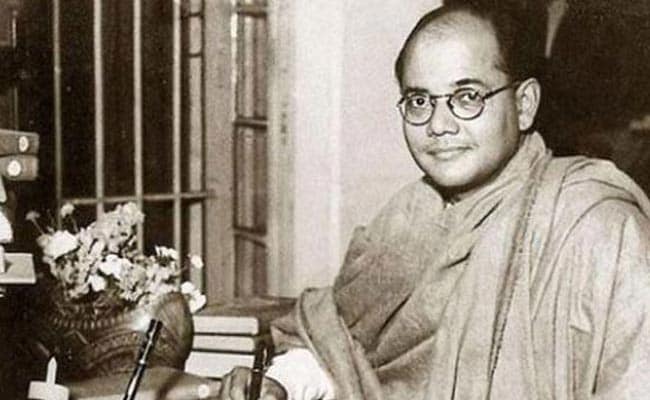
The governor was speaking at the “Netaji Subhas Chandra Bose Memorial Lecture”Kolkata: West Bengal Governor CV Ananda Bose on Monday announced that the portico of the Raj Bhavan in Kolkata will be renamed as the Netaji Subhas Chandra Bose Portico. An artwork or sculpture of an umbrella will be placed there to commemorate Netaji’s act of great defiance against the colonial powers. The portico was the place where Netaji historically defied the prohibition to carry his umbrella while meeting the British Governor-General at his office in Kolkata at the Raj Bhavan after his success in the Indian Civil Services examination.The governor was speaking at the “Netaji Subhas Chandra Bose Memorial Lecture” at The Bengal Chamber premises where an event was organised to launch a book by Sanjeev Sanyal, Economist and member of the Economic Advisory Council to the Prime Minister of India. The book is titled ‘Revolutionaries: The Other Story of How India Won Its Freedom’.Speaking to the audience, CV Ananda Bose said the practice of ‘His Master’s Voice Historians must change. “I have a question for you. This is a question young Indians are asking? This is a question discerning Indians are asking. Who obliterated the rightful place of Netaji Subhas Chandra Bose from the annals of history? Who did that? Who are the culprits? Those historians who treat history not as fact but as fiction. History should not be historical fiction,” he said.”This is history. This is not historical fiction. There is a lot of fiction going around on who is responsible for the freedom of this nation. I think there is an attempt, rightly or wrongly, certainly wrongly in my point of view, of dumping the memories of Subhas Chandra Bose into the dustbins of history. Who is responsible for this is the moot question now. The responsibility for this must be fixed,” Governor CV Ananda Bose added while praising Sanjeev Sanyal for writing the book on revolutionary freedom fighters of India, many of whom as Mr Sanyal points also came from within the Congress fold, including Netaji Subhas Chandra Bose.The Bengal Governor invoked Rabindranath Tagore by reiterating his epithet of ‘Desh Nayak’ for one of the most impactful revolutionary leaders of the freedom struggle. The Governor also revealed how his own father was a devotee of the Netaji Subhas Chandra Bose and narrated stories to him about Netaji to him during his childhood. In a message, Professor Dr Anita Bose Pfaff, daughter of Netaji and senior economist, rued his untimely death, but said, “On the other hand, it may be a boon because he did not have to witness the tragedy of India’s partition. He would have opposed this partition with all his determination. He had warned against the British ruler’s intention of divide and rule and of their continuing emphasis of communal division of India. One might say his untimely death spared him a heartbreak.”The book – ‘Revolutionaries: The Other Story of How India Won Its Freedom’ – seeks to challenge the inclination to tell the history of India’s struggle for freedom from the perspective of the non-violent movement. “Yet, the story of armed resistance to colonial occupation is just as important. Names such as Vinayak Savarkar, Aurobindo Ghosh, Rashbehari Bose, Bagha Jatin, Sachindra Nath Sanyal, Bhagat Singh, Chandrashekhar Azad and Subhas Chandra Bose are still widely remembered. Their story is almost always presented as acts of individual heroism and not as part of a wider movement that had any overarching strategy or significant impact on the overall struggle for Independence,” Sanjeev Sanyal said while pointing out that was completely untrue. “In reality, the revolutionaries were part of a large network that sustained armed resistance against the British Empire for half a century. They not only created a wide network inside India but also established nodes in Britain, France, Thailand, Germany, Persia, Russia, Italy, Ireland, the United States, Japan and Singapore. At various points, they received official support and recognition from the governments of some of these countries. Even the internal dynamics of the Indian National Congress of the time cannot be understood without the revolutionaries, who enjoyed widespread support within the organization,” Mr Sanyal told NDTV in an interview. “This was no small-scale movement of naive individual heroism but one that involved a large number of extraordinary young men and women who were connected in multiple ways to each other and to the evolving events of their times,” Sanjeev Sanyal said while explaining the purpose of the book.Featured Video Of The DayRichest 1% In India Own More Than 40% Of Country’s Total Wealth: Report
Source link
 Strange India
Strange India